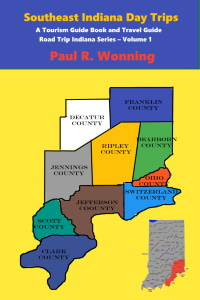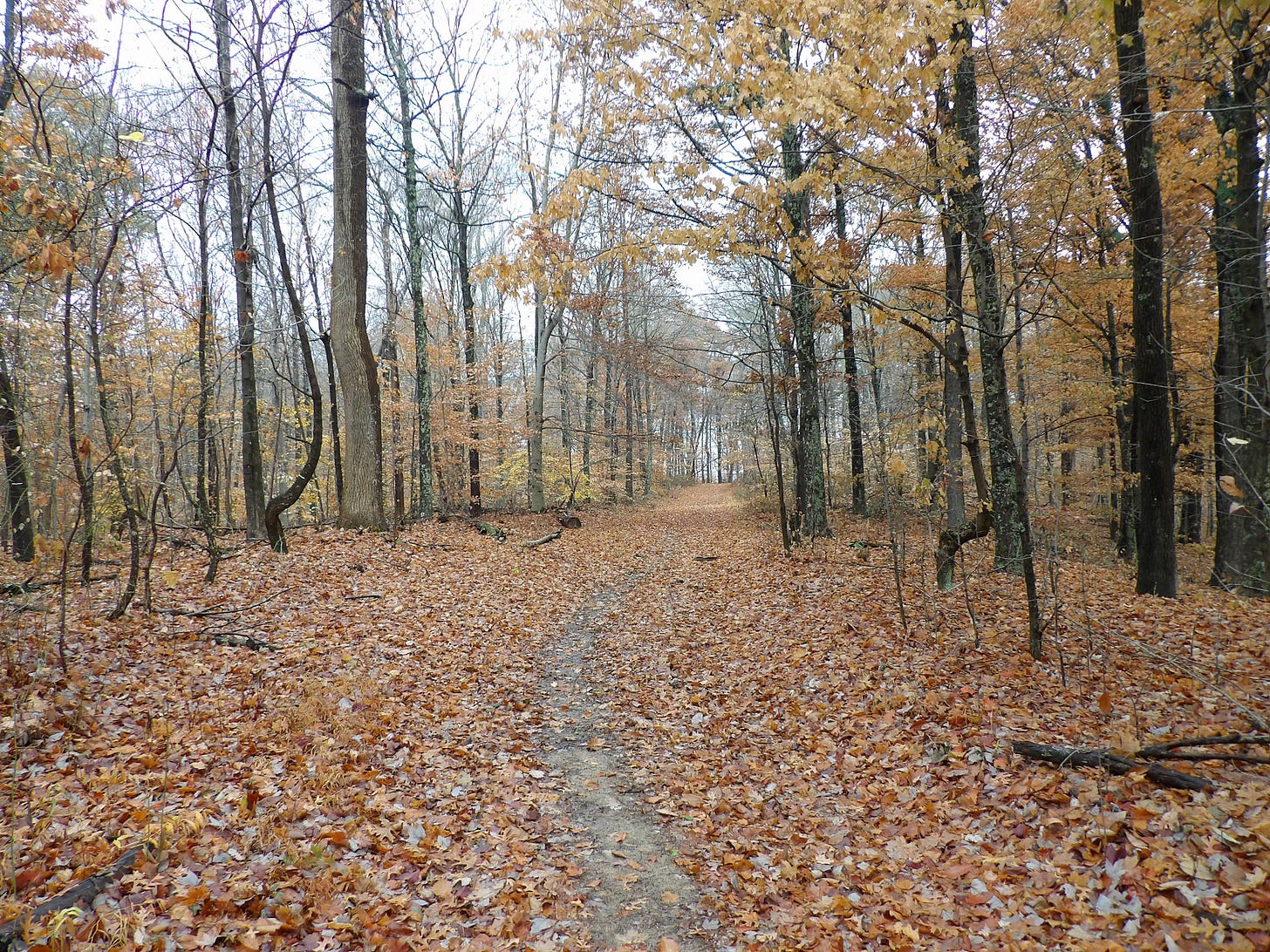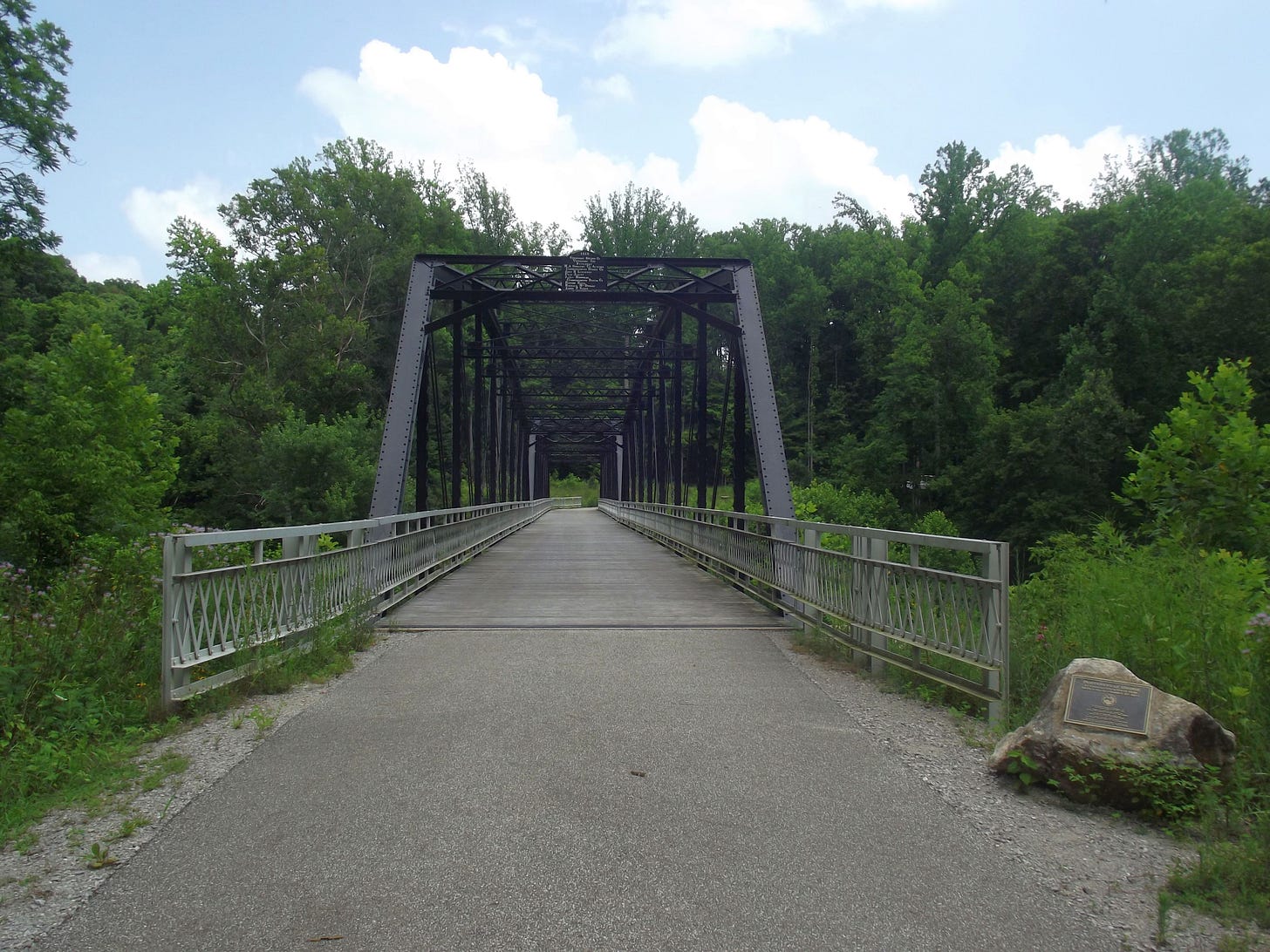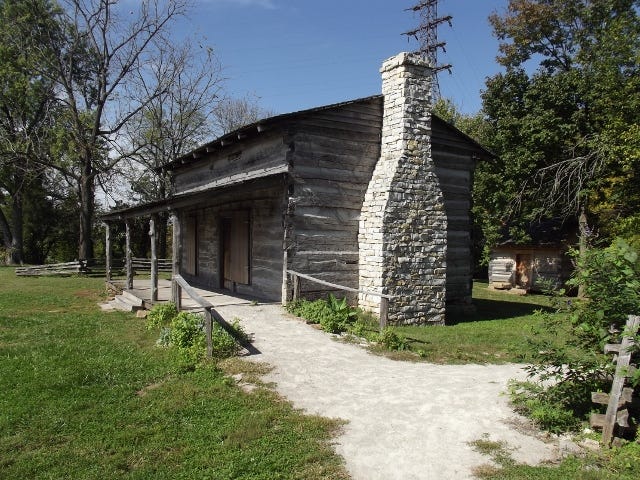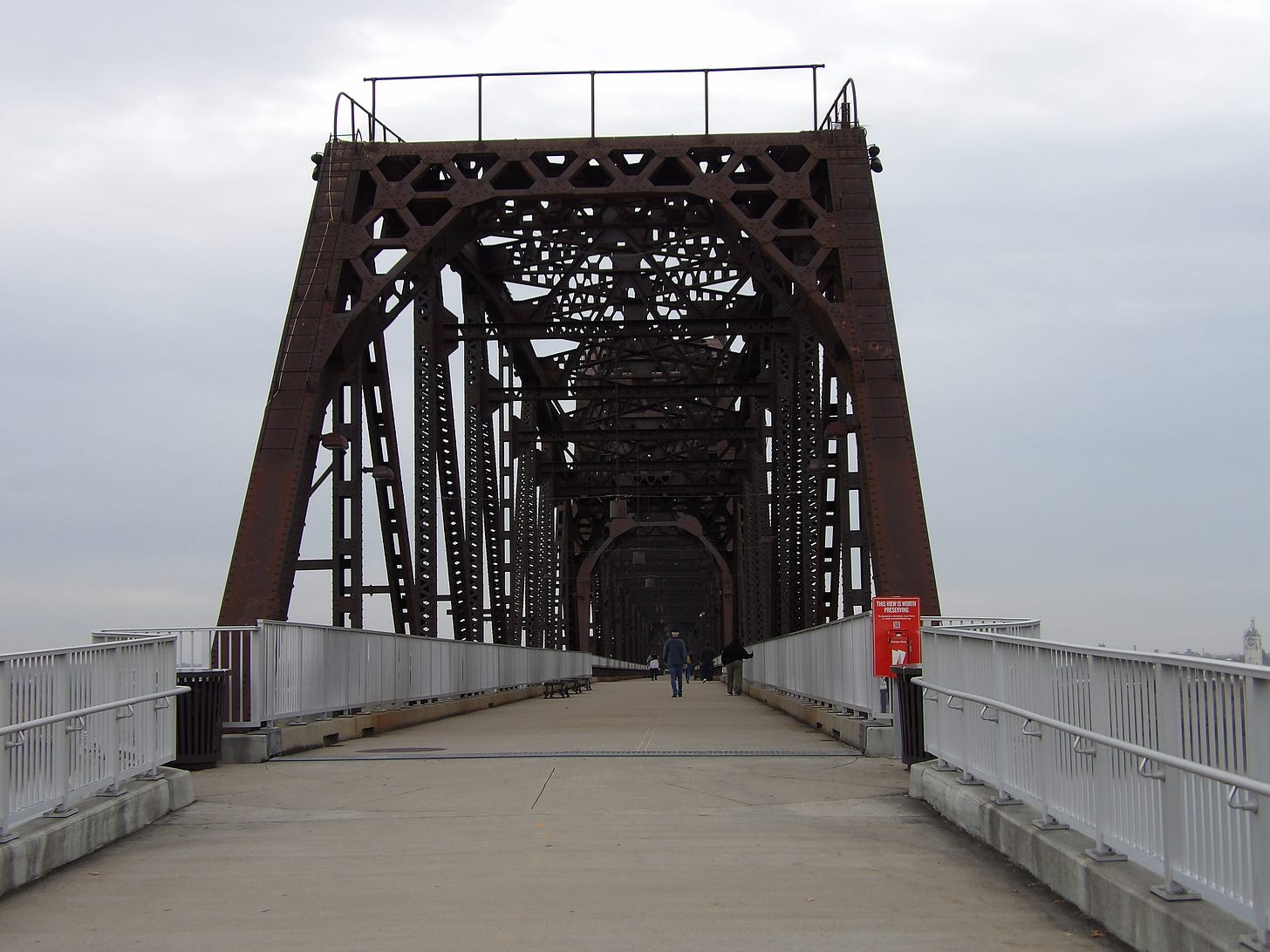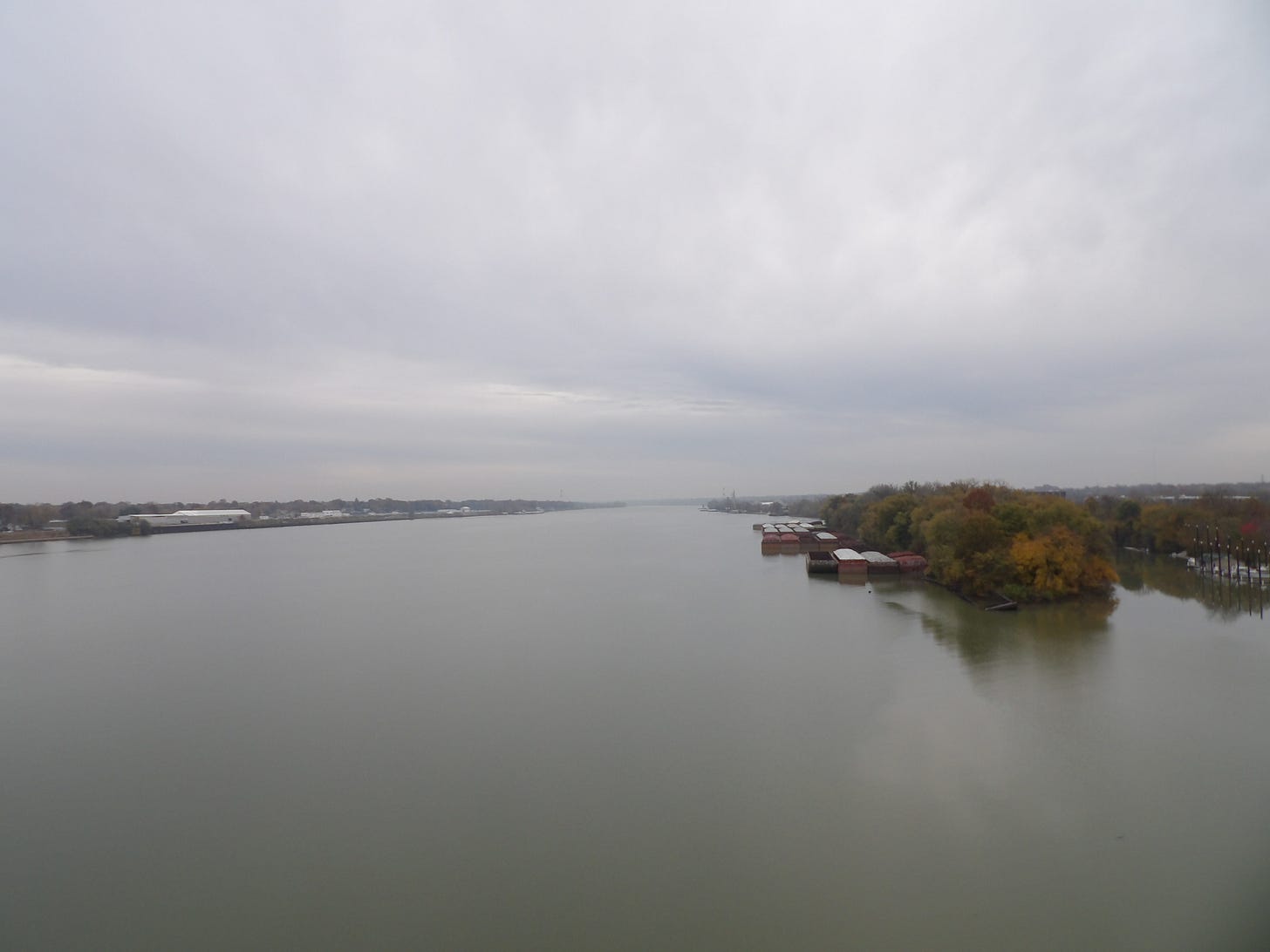Road Trip Indiana - Destination Clark County
Visit Indiana's Second oldest County
Portions of this Article Excerpted from the Author’s Book:
Clark County Indiana
Indiana's second oldest County, Clark, lies along the north shore of the Ohio River and is at the mid-section of Indiana's southern border. Floyd, Washington, Scott County and Jefferson Counties surround Clark County and the Ohio River forms its southern border.
Clark County, in southeastern Indiana is named after Revolutionary War Hero General George Rogers Clark who wrested control of the vast Northwest Territory from the British during the Revolutionary War. For these exploits Congress awarded General Clark and his regiment 150,000 acres of land. Clark designated around 1000 acres of this grant to create the town of Clarksville, also named after the General. Clarksville was the first settlement authorized by the United States Government in the Northwest Territory. Clark County has many places of interest within its bounds, and you will surely enjoy your visit.
In this article, we will visit four sites, Deam Lake, Charlestown State Park, the George Rogers Clark Home Site and the Big 4 Station Park.
Deam Lake
194-acre Deam Lake is a 194-acre lake has a swimming beach with shower and bathhouse facilities, a handicap ramp and a food concession stand. There is lake access for boating via a boat ramp. Motorboats are limited to the use of an electric trolling motor. Rowboat rentals are available during the summer season.
Multi-Use Facility
The Indiana Department of Natural Resources has classified Deam Lake as a multi-use property. This means that a multitude of outdoor activities can be going on at the same time. These activities include swimming, hiking, hunting, horseback riding, boating, picnicking, fishing and camping. There are designated hunting areas in the facility, away from the other recreational activities. A visit to this Indiana State place is rich with outdoor experiences.
Hiking Trails
There are a number of different kinds of forest trails at Deam Lake. The four hiking trails cover a variety of terrain and total almost seven miles. There are almost eighty miles of horse trails and five miles of mountain bike trails.
Deam Lake Camping
Camping facilities include a horseman's camp and 116 Class A campsites. Class "A" facilities include electrical hookup, modern restrooms/showers (at least one shower station wheelchair accessible), picnic table, fire ring and parking spur. Drinking water and a dump station are also available in the area.
Picnicking
There are several picnic areas located around the facility, many with shelters. This southern Indiana park is a great place to visit.
Deam Lake State Recreation Area
1217 Deam Lake Road
Borden, IN 47106
(812) 246-5421
Charlestown State Park
Charlestown State Park offers some fantastic hiking opportunities along the Ohio River and pretty Fourteen Mile Creek. There are over seventy-two different species of birds that have been sighted here, including Bald Eagles and bluebirds.
Indiana Army Ammunition Plant
Charlestown State Park occupies a part of the Indiana Army Ammunition Plant. Some of the abandoned facilities of are still located in the park. The Indiana Ammunition Plant originated during World War 2. Construction completed May 31, 1942 with production of ammunition beginning in April. The Indiana Ammunition Plant manufactured three types of ammunition at the plant. These were propellant charge bags, rocket propellant and smokeless powder. The plant supplied materials for the war effort and later for the Korean War and other conflicts.
New State Park
All three plants ceased operation by 1992. The company ceded 4,500 acres of the property to the State of Indiana for use as a state park. The park also contains the remnant of the Fern Grove and Rose Island Resorts site.
Located within Charlestown State Park, The Fourteen Mile Creek area is the site of a former amusement park called Fern Grove and Rose Island Resorts. The park was a popular destination in the 1920's and early 1930's.
Fern Grove and Rose Island Resorts
Recreational use began as a place for church picnics and family reunions. Called Fern Grove because of the abundance of ferns that grew there the Louisville and Jeffersonville Ferry Company purchased the property to increase its ferry business. Since the area was best accessed by water, people chartered the company's ferries to visit the island. The company thrived during the 1880's through the early twentieth century as it utilized the area.
In 1923 a man named David Rose purchased the facility and named it Rose Park. He spent $250,000 improving the property. He installed a zoo, pony rides, merry-go-round, Ferris wheel, roller coaster, shooting gallery, cafeteria, swimming pool, and rental rowboats. An impressive stone fountain graced the center of the resort. Water pumped from an aquifer 200 feet deep flowed over the mortared limestone fountain. Visitors could stay overnight in the Rose Island Hotel, enjoying the grand view of the river while basking in the cool, river breeze. In reality, the park was not on an island, but a peninsula that people could access only by steamboat, swinging footbridge, ferry or steamboat. The park occupied about 118 acres. Visitors could purchase steamboat tickets to travel to the park from Madison, Louisville, Jeffersonville and other area towns. The park remained a popular destination until the 1937 flood covered the park with ten feet of water. The park never recovered.
Indiana Army Ammunition Plant
When the Indiana Army Ammunition Plant went into operation in 1941, Rose Park was on the property. Several buildings deteriorated due to disuse. The plant deactivated in 1983. The State of Indiana received the area in 1993 for a State Park.
In 2011, the Portersville Bridge, moved from Dubois County, allows visitors foot access to the old amusement park site via Trail 3 and 7. Interpretive signage and some displays should be finished in 2014.
Still standing, or partially standing, is the old stone fountain, a retaining wall and some stone steps from the hotel, the ticket booth that admitted people from the boat landing and a few other relics of the past.
Portersville Bridge
The two-span Portersville Bridge spanned the White River at Portersville, Indiana. The Vincennes Bridge Company built this bridge in 1912. A huge flood promptly inundated the bridge. Construction crews tore down the bridge and rebuilt it the next year. The workers built it three feet higher to avoid flooding. The bridge has been the scene of one wedding, Dot and Dimp Graves, who met on the bridge during its construction. The nuptials took place on July 13, 1913.
Mailing Address:
P.O. Box 38
Charlestown, IN 47111
(812) 256-5600
Mapping Address:
12500 Indiana 62
Charlestown, IN 47111
George Rogers Clark Home Site
General George Rogers Clark
Revolutionary War Hero General George Rogers Clark settled on this beautiful spot overlooking the grand Ohio River. General Clark's fame came from his exploits during the winter of 1778 during which he captured the three British posts in the Illinois country, Vincennes, Cahokia and Kaskaskia. This courageous expedition, composed of 175 men, took these posts without firing a shot, thus securing what would become the Northwest Territory from the British. Congress carved six states from this immense territory Indiana, Illinois, Michigan, Wisconsin, Minnesota and Ohio. General Clark borrowed the money to fund the expedition. The United States Government never properly compensated him for his exploits, and he spent most of his last days dealing with financial difficulties.
Clark Grant
For his services, the State of Virginia awarded General Clark 150,000 acres, called the Clark Grant. This grant makes up most of current Clark County. Clark built a cabin and a gristmill on the spot occupied by the replica and lived there until 1809, when he had a stroke and fell into the fireplace, burning his leg. The leg needed amputation so he could no longer operate the mill. He moved to live with his brother-in-law in Kentucky, dying in 1818 after suffering another stroke.
Restored Cabin
The cabin on this spot is not the original cabin. There are no known drawings of that cabin, destroyed in 1854. This one comes from Ripley County, Indiana near the town of Osgood. The State of Indiana moved it here in 2001,
The smaller cabin is also a replica of the cabin occupied by Clark's servants, the McGee family. Technically slavery was illegal in the Northwest Territory so many slaves that lived there became free when the Northwest Ordinance became law. Many, lacking money to buy land, signed indentured servants agreements with their former masters. Their masters granted freedom and a tract of land to them as payment after a set period of servitude.
Corps of Discovery
Interpretive Panels Describe the Gathering of the Corps of Discovery
William Clark, George Rogers Clark's younger brother, occupied the cabin with his brother. He kept up correspondence with President Thomas Jefferson, with whom both he and his brother George were friends. In 1803, he received a letter from the President requesting him to form up a company to explore the vast new acquisition, the Louisiana Territory that Jefferson had purchased from France in 1803. The cabin thus became a staging point for the Corps of Discovery. The expedition, now known as the Lewis and Clark Expedition, launched on the nearby river.
The Department of Natural Resources has erected several interpretative plaques outlining the beginnings of this voyage and the men that took part in it.
Overlooking the Majestic Ohio River
Visitors, during the time the park is open, can browse through the cabins and meander through the grounds. There are picnic tables allowing the visitor to gaze out over the waters of the Ohio River as they enjoy their lunch.
Beginning the Lewis and Clark Expedition
The area is ripe with history as the final home of an American Revolutionary War hero, sometimes called the "Conqueror of the Northwest" General George Rogers Clark and his famous brother William Clark, one of the leaders of the Lewis and Clark Expedition.
For more information about the Clark Homesite, visit
George Rogers Clark Homesite
1102 W. Harrison Ave.
Clarksville, IN.
Big 4 Station Park
Visitors to this park can stroll across the Ohio River on the Big Four Walking Bridge that leads to Louisville, Kentucky across the River.
Big Four Railroad
Formed on June 30, 1889, by the merger of the merger of the Cleveland, Columbus, Cincinnati and Indianapolis Railway, the Cincinnati, Indianapolis, St. Louis and Chicago Railway rail companies, the Indianapolis and St. Louis Railways, the company bought the Indiana, Bloomington and Western Railway in 1890. The New York Central acquired the line in 1906; but ran it as a separate entity until 1930. In 1925 the Big Four operated 2,391 route-miles and 4,608 track-miles. It carried 8180 million net ton-miles of revenue freight and 488 million passenger-miles.
In February 2011 Indiana and Kentucky commenced a joint venture to convert the former railroad bridge into a pedestrian bridge that connected the two cities.
Constructed in 1895, the six-span former railroad truss bridge carried trains of the Big Four Railroad across the river. The Kentucky side opened on February 7, 2013. A year later the Jeffersonville ramp opened on May 20, 2014. The bridge connects Waterfront Park in Louisville with the Big 4 Station Park in Jeffersonville. Hikers and bicyclists can enjoy scenic views of the Ohio River on the mile-long route.
10 Acres
Playground area
Flag Pole
Park Benches
Water Feature
Bathrooms
Parking
Picnic Tables
Paved sidewalk 0.45 miles
Pavilion
304 Mulberry Street
Jeffersonville, In 47130
These are just four of the many places in Clark County visitors to Southeastern Indiana can enjoy. Readers will find all of the attractions of Clark County, as well as the other nine counties of Southeastern Indiana in the book, Southeast Indiana Day Trips.





